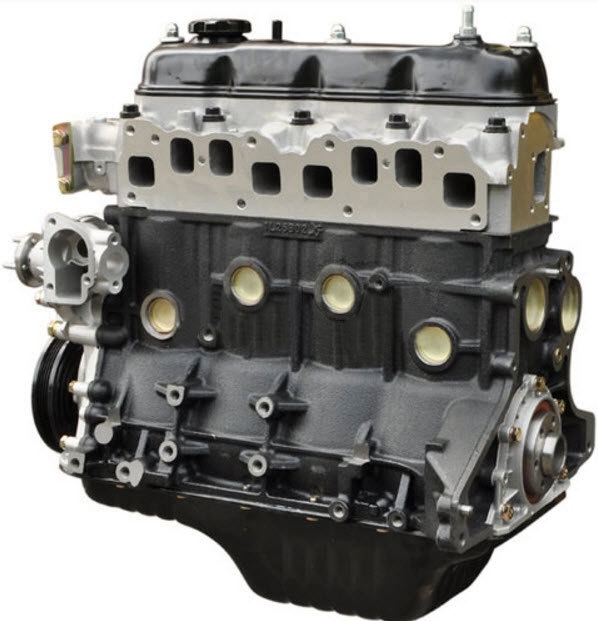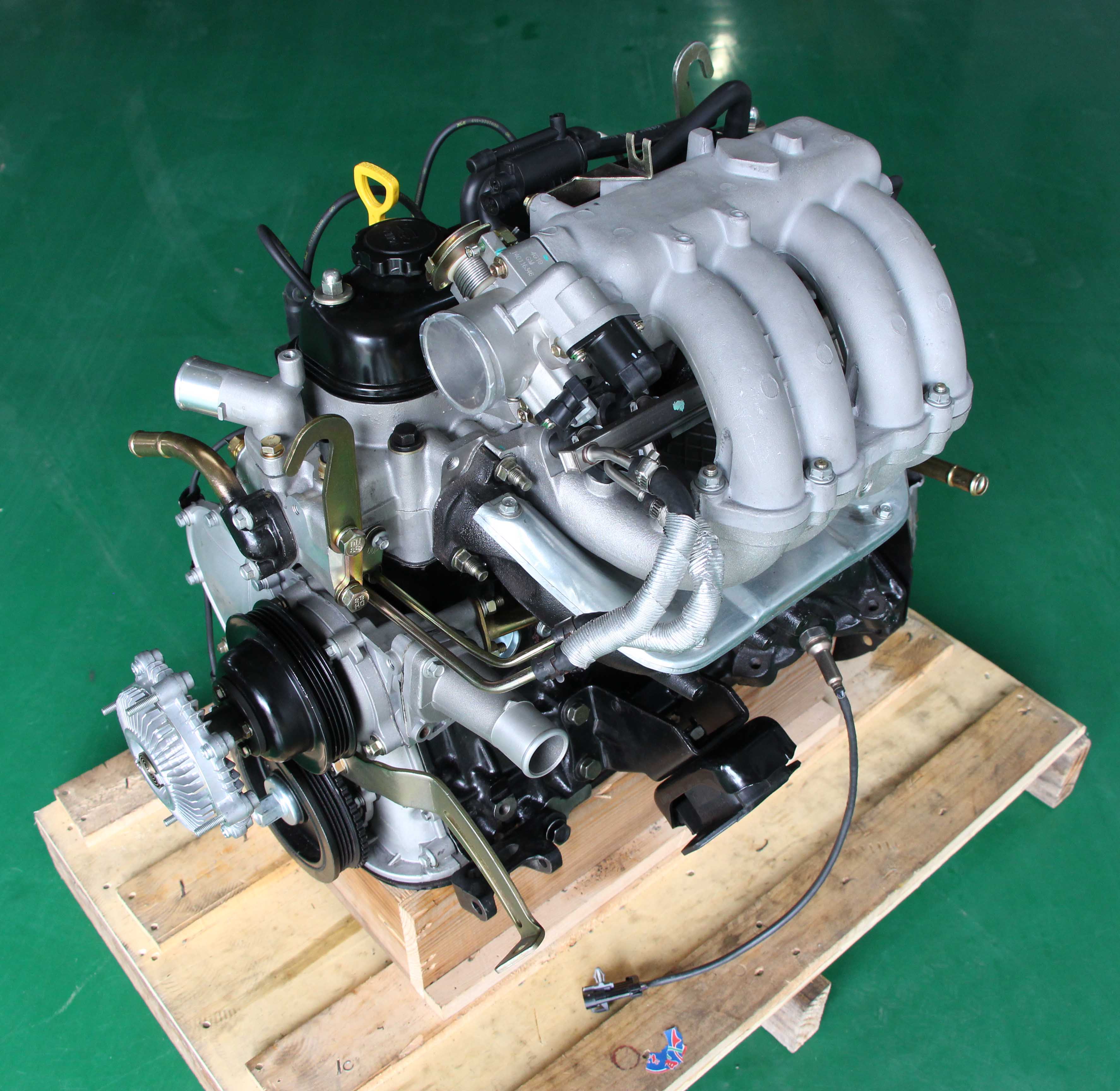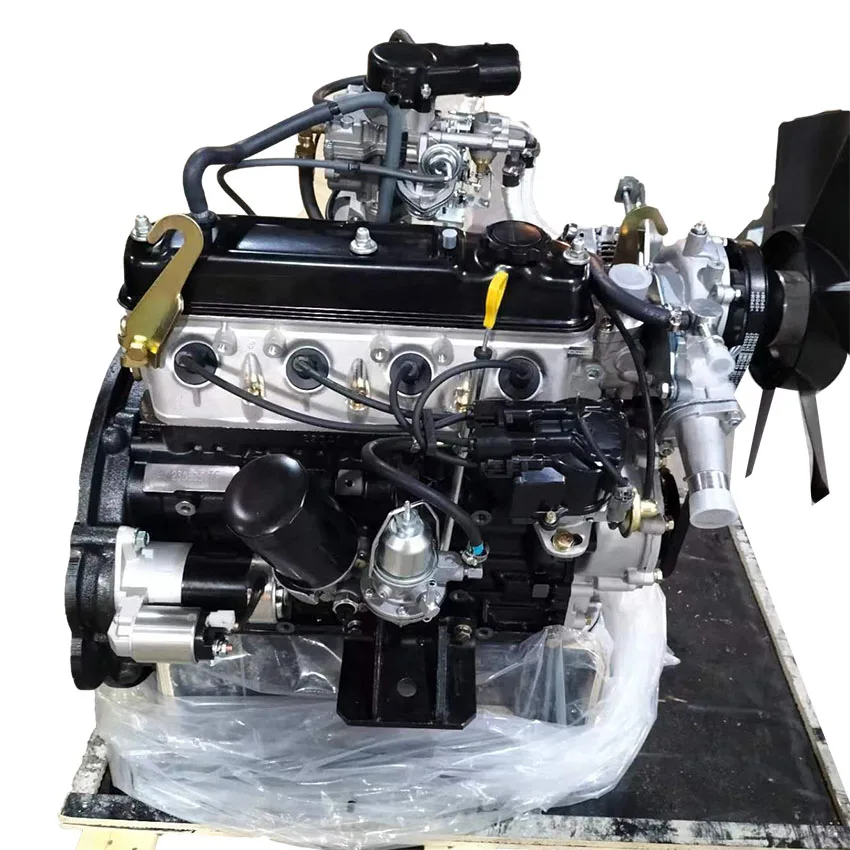How the 4Y Engine Compares to Other Engines in Terms of Fuel Efficiency
Why the Engine Is the very best Selection for Efficiency and Efficiency in Your Car
The engine stays a pivotal part in vehicle design, mostly because of its significant impact on both efficiency and effectiveness. As improvements in modern technology enable smaller engines to supply amazing power while enhancing gas economic climate, the combination of attributes such as turbocharging and hybrid systems becomes increasingly essential. These technologies not just improve driving experience but likewise address environmental issues. Nevertheless, the concern develops: exactly how do these components coalesce to redefine our understanding of automobile efficiency? Exploring this balance reveals much deeper understandings into the future of engine layout.
Recognizing Engine Types
Comprehending the numerous kinds of engines is essential for optimizing performance and performance in automotive layout. The primary engine types include internal combustion engines (ICE), electric engines, and hybrid systems, each offering distinct benefits and limitations.
Internal burning engines, which can be additional categorized into gas and diesel variations, depend on the burning of fuel to produce power. Gasoline engines typically supply greater RPMs and much better acceleration, while diesel engines are understood for their torque and fuel performance, making them ideal for sturdy applications.
Electric engines, on the other hand, use electrical motors powered by batteries or gas cells. They supply rapid torque shipment, leading to smooth acceleration and reduced emissions. The effectiveness of electric engines is substantially greater than that of ICEs, making them a prominent option for eco-conscious customers.
Hybrid systems integrate both inner combustion and electrical engines, leveraging the toughness of both modern technologies. They enhance fuel intake by making use of electric power at reduced speeds and switching to gasoline or diesel for higher rates or larger tons.
Picking the appropriate engine kind is essential for achieving desired efficiency metrics and ecological sustainability in modern-day auto engineering.
The Impact of Engine Dimension
Engine dimension regularly plays a critical duty in determining an automobile's efficiency and effectiveness. Normally measured in litres or cubic centimeters, engine size straight affects the power result and torque attributes of a lorry. Larger engines normally produce even more horsepower, making it possible for greater acceleration and higher full throttle. This is specifically advantageous in applications calling for robust efficiency, such as cars and heavy-duty vehicles.
However, boosted engine size often correlates with lessened gas performance. Smaller engines can supply appropriate efficiency for everyday driving while advertising far better performance, making them a preferred option in mid-size and small vehicles.
Additionally, developments in engine style, such as turbocharging and straight fuel injection, allow smaller sized engines to accomplish power degrees similar to their larger counterparts. This pattern highlights the relevance of not exclusively concentrating on engine size but also considering total lorry layout and technology (4y engine). Ultimately, the effect of engine size on performance and efficiency highlights the demand for customers to evaluate their particular driving demands and choices when picking a car
Advanced Engine Technologies
Technologies in engine modern technologies have considerably reshaped the landscape of auto efficiency and performance, structure upon the fundamental principles established by engine size. Especially, innovations such as turbocharging and direct gas injection have enabled smaller engines to supply power degrees previously connected with larger counterparts. Turbochargers compress air entering the engine, permitting raised power result without an equivalent increase in engine size, while straight injection optimizes gas shipment, boosting combustion efficiency.
In addition, variable valve timing systems have actually emerged as a crucial modern technology, permitting engines to change shutoff procedure based on driving conditions. This flexibility improves both performance throughout velocity and gas effectiveness throughout travelling. Hybrid and electrical engine technologies better illustrate the shift review in auto style, integrating conventional interior burning engines with electric motors to take full advantage of performance while decreasing exhausts.
Furthermore, improvements in materials science have actually resulted in lighter, much more resilient engine parts, better enhancing efficiency and durability. The assimilation of innovative electronics and engine control devices also permits real-time changes, making sure ideal performance across different conditions. Collectively, these innovative engine technologies not only boost automobile efficiency however also add to a more lasting automotive future, showing the ongoing development of engine layout.
Harmonizing Power and Performance
Striking an equilibrium between power and efficiency is vital in modern-day automobile design as suppliers look for to fulfill significantly browse around here stringent discharges guidelines while pleasing customer demand for performance (4y engine). The obstacle hinges on enhancing engine features to deliver robust power result without sacrificing fuel economic situation
To accomplish this equilibrium, engineers employ various techniques, such as turbocharging, which boosts engine power by forcing in more air, permitting a smaller engine displacement that improves fuel performance. Variable valve timing modern technologies likewise play a significant duty, enabling engines to adjust their efficiency attributes based upon driving problems, consequently enhancing both power and effectiveness.
In addition, advancements in products and producing strategies have actually resulted in lighter engine components, which minimize overall automobile weight and improve gas performance without jeopardizing power. Hybrid modern technologies have also become a practical option, integrating conventional interior burning engines with electrical powertrains to offer an increase in performance while maintaining reduced emissions.

Future Trends in Engine Design

Additionally, the development of sophisticated products, such as light-weight composites and high-strength alloys, try this website is readied to change engine parts. These products not only decrease weight however also boost thermal efficiency, consequently maximizing efficiency. Furthermore, makers are checking out variable compression ratios, enabling engines to adjust to various driving conditions, enhancing both power outcome and gas economic situation.
Better, the increase of artificial intelligence and artificial intelligence in engine style is making it possible for anticipating maintenance and real-time efficiency optimization. This innovation can lead to engines that self-adjust for maximum efficiency based on driving patterns.

Verdict
In final thought, the engine serves as a vital element in attaining ideal performance and efficiency in modern-day vehicles. The interaction between engine dimension and style proceeds to progress, driving innovations that stabilize electrifying performance with ecological sustainability.
Additionally, advancements in engine style, such as turbocharging and straight gas shot, allow smaller sized engines to achieve power levels comparable to their larger counterparts.Developments in engine innovations have actually significantly reshaped the landscape of auto efficiency and effectiveness, building upon the foundational principles established by engine dimension. Turbochargers compress air going into the engine, permitting for enhanced power output without a corresponding rise in engine size, while straight shot enhances fuel delivery, boosting burning effectiveness.
Crossbreed and electric engine technologies further show the shift in automotive design, combining conventional internal burning engines with electrical motors to make best use of performance while minimizing emissions.
Collectively, these innovative engine innovations not just enhance automobile efficiency yet also contribute to an extra sustainable vehicle future, showing the continuous development of engine layout. (4y engine)